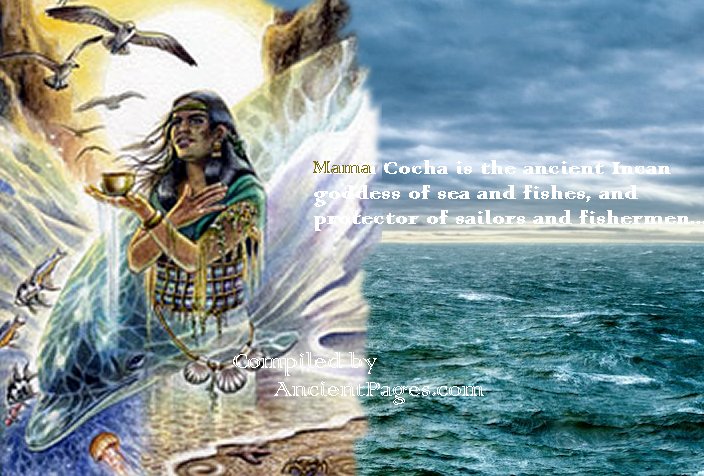Mama Cocha – Inca Goddess Of The Sea With Strong Connection To Lake Titicaca, Peru
A. Sutherland - AncientPages.com - In one of our latest articles, we presented Mama Ocllo, an important deity in the ancient beliefs of Inca people.
Today we write about Mama Cocha, known as ‘Sea Mother', Mother of the Waters’ (‘Laguna Madre’), whose powers were derived from the water.
In the Inca beliefs, Mama Cocha is one of the four elemental, divine mothers; the others are Mama Nina, the goddess of fire, Pachamama, the goddess of the earth and fertility, who presides over planting and harvesting and can cause earthquakes. The latter is Mama Waira, who teaches the Inca the art of spinning. These four deities were worshiped as mothers of life because they ruled everything that was considered natural elements such as land, fire, air, and water.
All rivers, lakes, mountains, animals, plants, and meteorological phenomena possess such a spirit, according to the Inca. The word ‘mama’ added to the name of any animal, is used to designate a gigantic prototype of the species or closely associated with them.
Mama Cocha is the ancient Incan goddess of sea and fishes, and protector of sailors and fishermen exposed to dangers at sea. She is also responsible for providing plenty of fish, preventing storms, and calming the waters for their safety.
She is the wife of Viracocha, the God of Heaven, and mother of Mama Quilla, goddess of the moon and fertility and Inti (Inti Tayta), the Sun god. This powerful goddess has even unlimited power over all bodies of water, including rivers, lagoons and lakes, tides, and the ocean.
See also:
Catequil – Cultural Hero And Inca God Of Thunder And Lightning
Gluskap: Mythical Hero Who Defeated Evil Sorcerers And Demon Followers
Story Of Atahualpa: The Last Emperor Of The Inca Empire
Still, first of all, she has a unique relationship with the Andean sacred lake, Lake Titicaca, which is central to the Inca creation stories. Its waters are said to be the tears of the Creator, and from this sacred lake emerged the sun and the moon, Inkari, and Collari, who were the first mother and father of the Inka Nation.
Mama Cocha has always been particularly important to people living alongside the coastal regions due to proximity and daily dependence upon the sea.
As it was centuries ago and today, throughout the entire coastal territory of Peru, Ecuador, Colombia, and northern Chile, an ancient belief in the Inca goddess Mama Cocha remains in force in these places where fishing is essential for the economy and well-being of its inhabitants. That is why Mama Cocha is worshiped and esteemed with great devotion, hoping she can provide a good fortune in fishing, and give sufficient protection of coastal towns against devastating tsunamis.
Even the farmers have to worship and make offerings to Mama Cocha because she controls annual rainfall that affects crop health, and is beneficial for agriculture.
Worship Of Mama Cocha
Rites of Mama Cocha have to be performed by women since this goddess gives relevance to her own gender, that is, to the feminine. The ceremony is organized every 8th of September and includes dances, music, and serving of food.
According to an old tradition, one way to worship the goddess of the sea is to bathe in its waters at midnight. The women who did it asked for health, beauty, strength, and fertility. Another tradition is held on the banks of lagoons and rivers, where believers bow to all the gods in order to invoke the great Mama Cocha.
This kind of ancient Inca rituals has survived to this day, being a source of inspiration for many new rites of this ancient culture.
Written by – A. Sutherland - AncientPages.com Senior Staff Writer
Copyright © AncientPages.com All rights reserved. This material may not be published, broadcast, rewritten or redistributed in whole or part without the express written permission of AncientPages.com
More From Ancient Pages
-
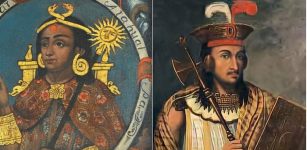 Mystery Of The Lost Golden Chain Of Huayna Capac: Will The Ancient Inca Treasure Ever Be Found?
Artifacts | Dec 30, 2020
Mystery Of The Lost Golden Chain Of Huayna Capac: Will The Ancient Inca Treasure Ever Be Found?
Artifacts | Dec 30, 2020 -
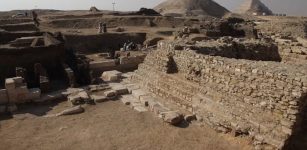 Pyramid Of Unknown Ancient Egyptian Queen And Hundreds Of Mummies Discovered In Saqqara
Archaeology | Nov 17, 2022
Pyramid Of Unknown Ancient Egyptian Queen And Hundreds Of Mummies Discovered In Saqqara
Archaeology | Nov 17, 2022 -
 Gallic Leader Vercingetorix In Victorious Battle Of Gergovia, 52 BC
Featured Stories | Jan 23, 2017
Gallic Leader Vercingetorix In Victorious Battle Of Gergovia, 52 BC
Featured Stories | Jan 23, 2017 -
 Extremely Rare Roman Glass Vase Adorned With A Message Found In France
Archaeology | Nov 18, 2020
Extremely Rare Roman Glass Vase Adorned With A Message Found In France
Archaeology | Nov 18, 2020 -
 The Legend Of Little Deer—Interesting Cherokee Tale Of How Disease And Medicine Began, And Why The Native Americans Respect All Life
Featured Stories | May 10, 2017
The Legend Of Little Deer—Interesting Cherokee Tale Of How Disease And Medicine Began, And Why The Native Americans Respect All Life
Featured Stories | May 10, 2017 -
 Previously Unkown Manuscript Reveals New Insight Into Medieval Christian Beliefs In England
Archaeology | Oct 26, 2021
Previously Unkown Manuscript Reveals New Insight Into Medieval Christian Beliefs In England
Archaeology | Oct 26, 2021 -
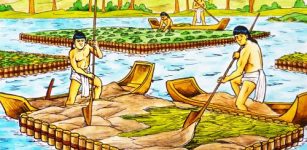 Chinampas: Artificial Islands Created By The Aztecs To Improve Agriculture
Ancient History Facts | May 17, 2016
Chinampas: Artificial Islands Created By The Aztecs To Improve Agriculture
Ancient History Facts | May 17, 2016 -
 Secrets Of The Lost Tomb X – Mysterious Manuscripts And Strange Engravings – Part 1
Featured Stories | Apr 9, 2019
Secrets Of The Lost Tomb X – Mysterious Manuscripts And Strange Engravings – Part 1
Featured Stories | Apr 9, 2019 -
 Ancient Mystery Of America’s Missing Metal – Can The Answer Be Found In Ancient Europe?
Civilizations | May 18, 2018
Ancient Mystery Of America’s Missing Metal – Can The Answer Be Found In Ancient Europe?
Civilizations | May 18, 2018 -
 Egyptians Mastered Medicine Thousands Of Years Ago
Civilizations | Oct 1, 2015
Egyptians Mastered Medicine Thousands Of Years Ago
Civilizations | Oct 1, 2015 -
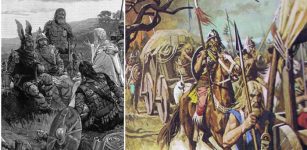 Treasure Of 1,753 Roman Silver Coins Accidentally Discovered In Poland
Archaeology | Apr 1, 2020
Treasure Of 1,753 Roman Silver Coins Accidentally Discovered In Poland
Archaeology | Apr 1, 2020 -
 Vast Network Of Previously Unknown European Bronze Age Megastructures Discovered
Archaeology | Nov 20, 2023
Vast Network Of Previously Unknown European Bronze Age Megastructures Discovered
Archaeology | Nov 20, 2023 -
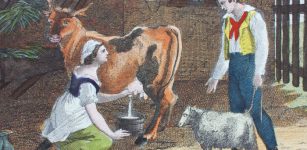 Drinking Milk Increased Ancient Human Body Size – New Study
Archaeology | Jan 18, 2023
Drinking Milk Increased Ancient Human Body Size – New Study
Archaeology | Jan 18, 2023 -
 Neanderthals Invented Or Developed Birch Tar Making Technique Independently From Homo sapiens
Archaeology | May 30, 2023
Neanderthals Invented Or Developed Birch Tar Making Technique Independently From Homo sapiens
Archaeology | May 30, 2023 -
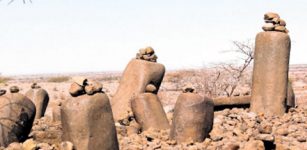 Namoratunga: ‘People Of Stone’ And Ancient Astronomical Observatory
Featured Stories | Jun 12, 2016
Namoratunga: ‘People Of Stone’ And Ancient Astronomical Observatory
Featured Stories | Jun 12, 2016 -
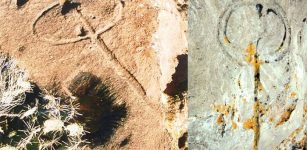 Puzzling Water Glyphs Of The American Southwest – Ancient Astronomical Symbols, Directional Signs Or Something Else?
Featured Stories | Apr 15, 2023
Puzzling Water Glyphs Of The American Southwest – Ancient Astronomical Symbols, Directional Signs Or Something Else?
Featured Stories | Apr 15, 2023 -
 Mysterious Kolob – Does The Sacred Star Of The Mormons Exist?
Featured Stories | Feb 4, 2019
Mysterious Kolob – Does The Sacred Star Of The Mormons Exist?
Featured Stories | Feb 4, 2019 -
 Puzzling Palpa Lines In Peru Made By The Paracas Culture Are Even Older Than The Nazca Lines
Featured Stories | Jan 2, 2018
Puzzling Palpa Lines In Peru Made By The Paracas Culture Are Even Older Than The Nazca Lines
Featured Stories | Jan 2, 2018 -
 Nygrotta: Species Migration Occurred Due To Climatic Shifts Millennia Ago – Ancient DNA And Bones Show
Paleontology | Apr 5, 2024
Nygrotta: Species Migration Occurred Due To Climatic Shifts Millennia Ago – Ancient DNA And Bones Show
Paleontology | Apr 5, 2024 -
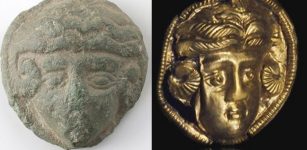 Unique Ancient Bronze Miniature Portraits Of Alexander The Great Found In Ringsted On The Island Of Zealand
Archaeology | Apr 11, 2024
Unique Ancient Bronze Miniature Portraits Of Alexander The Great Found In Ringsted On The Island Of Zealand
Archaeology | Apr 11, 2024

